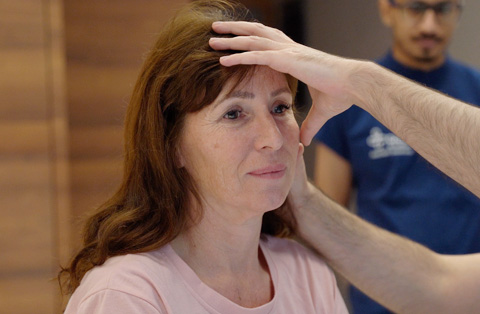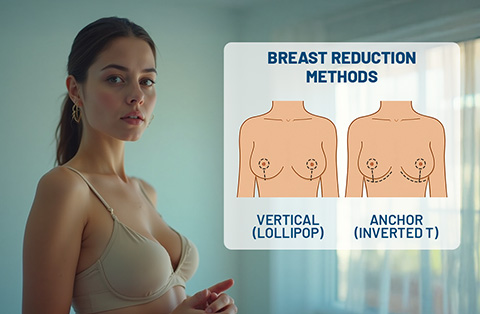Blurry vision, headaches, and dizziness could be linked to cataracts. Learn how cataracts affect your daily life and how treatment can restore clear vision, reduce strain, and improve balance.
What are the typical symptoms of cataracts?
Cataracts develop when the eye’s natural lens becomes cloudy, leading to vision problems. Symptoms usually progress slowly over time.
Common symptoms include:
Blurry or cloudy vision: Objects may appear hazy or less sharp.
Increased sensitivity to light: Bright lights or glare may cause discomfort.
Difficulty seeing at night: Vision may worsen in low-light conditions.
Fading or yellowing of colors: Colors may appear dull or less vibrant.
Halos around lights: A glowing ring may appear around light sources.
Frequent prescription changes: Glasses or contact lens prescriptions may need frequent updates.
Double vision in one eye: This occurs when the affected eye sees overlapping images.
These symptoms can affect daily activities, making tasks like reading or driving difficult.
Is there a connection between cataracts and headaches?
Cataracts primarily affect vision, but they can also contribute to headaches in some cases. The connection between cataracts and headaches is indirect and usually related to eye strain.
When vision becomes blurry or cloudy, the eyes work harder to focus. This extra effort can lead to strain, which may cause headaches. Bright lights and glare sensitivity, common with cataracts, can also trigger headaches, especially in individuals prone to migraines. Additionally, frequent changes in prescription glasses due to cataracts may cause visual discomfort, leading to headaches.
If headaches occur frequently along with vision problems, an eye exam can help determine if cataracts are the cause.
How can cataracts lead to eye strain and headaches?
Cataracts make the eye’s natural lens cloudy, reducing the ability to focus clearly. This forces the eyes and brain to work harder to interpret visual information, leading to eye strain and headaches.
Here’s how cataracts contribute to eye strain:
Blurred vision: The eyes struggle to bring objects into sharp focus, leading to constant refocusing efforts.
Increased light sensitivity: Bright lights and glare cause discomfort, making the eyes overwork to adjust.
Frequent squinting: Squinting helps momentarily sharpen vision but puts extra strain on eye muscles.
Difficulty with contrast: Reduced contrast sensitivity makes reading or recognizing faces harder, leading to visual fatigue.
Frequent prescription changes: The need for stronger glasses or contacts can cause temporary strain as the eyes adapt.
Over time, prolonged eye strain may lead to headaches, especially in individuals who spend long hours reading, using screens, or performing detailed tasks.
Are headaches a common symptom of cataracts?
Headaches are not a direct or common symptom of cataracts, but they can occur due to vision strain. As cataracts progress, they cause blurry vision, increased sensitivity to light, and difficulty focusing. These issues may lead to eye strain, which can trigger headaches in some individuals.
People who frequently squint, struggle with glare, or experience difficulty reading may develop headaches more often. However, if headaches persist or worsen, other eye or health conditions might be involved, and a medical evaluation is recommended.
Do cataracts cause dizziness and balance issues?
Cataracts do not directly cause dizziness or balance problems, but they can contribute to these issues by affecting vision. Clear vision is essential for maintaining balance and spatial awareness. When cataracts blur vision, depth perception and coordination may be affected, increasing the risk of dizziness and falls.
Ways cataracts may contribute to dizziness and balance issues:
Reduced depth perception: Difficulty judging distances can lead to missteps or falls.
Blurred or distorted vision: Poor vision can make movement feel unstable.
Increased sensitivity to light: Bright lights or glare may cause visual discomfort, leading to dizziness.
Frequent prescription changes: Adjusting to new glasses can momentarily affect balance.
Individuals experiencing dizziness along with vision problems should have their eyes examined to determine if cataracts are a contributing factor.
How can cataracts affect depth perception and balance?
Cataracts can affect depth perception and balance by reducing the eye’s ability to focus clearly. Depth perception relies on both eyes working together to judge distances accurately. When cataracts cause clouding in one or both lenses, this coordination is disrupted, making it harder to navigate surroundings safely.
Key ways cataracts impact depth perception and balance:
Blurred vision: Objects may appear out of focus, making it difficult to judge distances.
Reduced contrast sensitivity: Difficulty distinguishing objects from their background can lead to missteps.
Light sensitivity and glare: Bright lights may cause discomfort, making it harder to see clearly.
Poor low-light vision: Dim environments become challenging to navigate, increasing fall risk.
These vision changes can make everyday activities like climbing stairs, driving, or walking on uneven surfaces more difficult. If balance issues occur alongside cataracts, an eye exam can help determine the best course of action.
Is vertigo associated with cataracts?
Cataracts do not directly cause vertigo, but they can contribute to symptoms that may lead to dizziness or imbalance. Vertigo is often linked to inner ear disorders, but vision plays a crucial role in maintaining spatial awareness and stability.
If vertigo is persistent, an evaluation by both an eye specialist and a medical doctor is recommended to rule out other causes, such as inner ear problems or neurological conditions.
When should I see an ophthalmologist for cataract symptoms?
You should see an ophthalmologist if cataract symptoms start affecting daily activities or quality of life. Early evaluation can help determine the right time for treatment.
Signs that warrant an eye exam include:
Blurry or cloudy vision that makes reading, driving, or recognizing faces difficult.
Increased sensitivity to light or glare, especially in bright conditions or at night.
Difficulty seeing at night, leading to trouble driving or moving safely in dim environments.
Frequent changes in glasses or contact lens prescriptions without lasting improvement.
Double vision in one eye, which can interfere with clear sight.
Reduced depth perception causing difficulty judging distances and an increased risk of falls.
If vision problems worsen or impact daily tasks, an ophthalmologist can assess whether cataract surgery is needed to restore clear vision.
What are the treatment options for cataracts?
The only effective treatment for cataracts is surgery. In the early stages, symptoms may be managed with lifestyle adjustments, but surgery is needed when vision loss affects daily activities.
Non-Surgical Management (Temporary Relief):
Using brighter lighting for reading and tasks.
Wearing anti-glare sunglasses to reduce light sensitivity.
Updating eyeglass prescriptions for better clarity.
Using magnifying lenses for reading.
Cataract Surgery:
Phacoemulsification: The most common method. An ultrasound probe breaks up the cloudy lens, which is then replaced with an artificial intraocular lens (IOL).
Extracapsular Cataract Extraction (ECCE): Used for advanced cataracts. The cloudy lens is removed in one piece, and an IOL is implanted.
Cataract surgery is a safe and effective procedure with a high success rate. Most patients experience improved vision within a few days after surgery.
Can treating cataracts alleviate headaches and dizziness?
Yes, treating cataracts can help alleviate headaches and dizziness if they are caused by vision strain. Cataract surgery restores clear vision, reducing the need for excessive focusing effort, squinting, or straining, which can contribute to headaches.
Ways cataract treatment may relieve symptoms:
Improved vision clarity: Reduces eye strain, lowering the risk of headaches.
Better depth perception: Helps with balance and stability, decreasing dizziness.
Reduced glare sensitivity: Less discomfort from bright lights, preventing visual stress.
Elimination of frequent prescription changes: Stabilizes vision, reducing adaptation-related strain.
If headaches or dizziness persist after cataract surgery, other underlying conditions may be involved, and further evaluation may be needed.
How quickly can symptoms improve after cataract treatment?
Most patients notice vision improvement within a few days after cataract surgery. Some experience clearer sight within 24 to 48 hours, while full recovery can take a few weeks.
Timeline of symptom improvement:
First 24–48 hours: Initial clarity improves, but mild blurriness or discomfort may persist.
First week: Eye strain and glare sensitivity decrease as the eye heals.
2–4 weeks: Depth perception and balance improve, reducing dizziness risks.
1–2 months: Full stabilization of vision, with minimal risk of headaches or strain.
Recovery varies by individual. Following post-surgery care instructions ensures the best results.
How can I prevent or slow down cataract development?
While cataracts cannot always be prevented, certain lifestyle choices may help slow cataract development stages. Protecting eye health can delay the onset of symptoms and maintain clearer vision for longer.
Ways to slow cataract progression:
Wear UV-protective sunglasses to shield eyes from harmful sun exposure.
Maintain a healthy diet rich in antioxidants, including leafy greens, fruits, and fish with omega-3 fatty acids.
Quit smoking to reduce oxidative damage to the eye’s lens.
Control diabetes and other health conditions to prevent complications that contribute to cataracts.
Limit alcohol consumption to avoid excessive oxidative stress.
Use proper lighting to reduce eye strain during reading or close-up tasks.
Get regular eye exams to monitor vision and detect early cataract signs.
These habits promote overall eye health and may help delay the need for cataract surgery.





